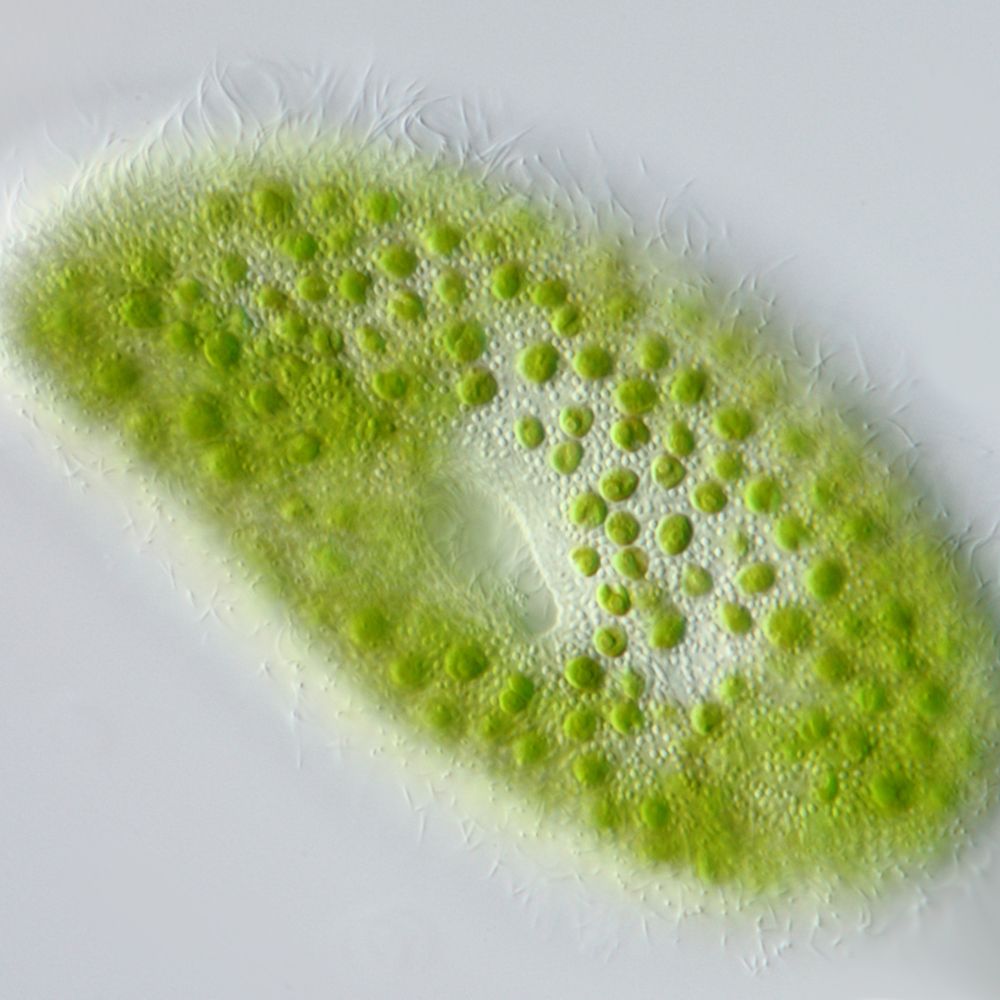My Cart
Your Shopping Cart is currently empty. Use Quick Order or Search to quickly add items to your order!

Matt Bostick
Product Development
January 2017
When you teach the concept of symbiosis and the endosymbiotic theory, consider using Paramecium bursaria, the single-celled, ciliated protist that forms a mutualistic relationship with algae. P. bursaria is the only known ciliate Paramecium species capable of forming and maintaining endosymbiotic algae within the cytoplasm. As a mutualistic symbiosis, the Paramecium host supplies carbon dioxide, nitrogen components, and protection for several hundred endosymbiotic algal cells of the genus Chlorella. In return, the Chlorella endosymbionts (symbiotic organisms that live within the host’s body) may supply their host with maltose, a product of algal photosynthesis.
Unlike obligate mutualism, in which 1 organism cannot survive without the other, the relationship between Chlorella sp. and P. bursaria is considered to be a facultative mutualism. Algae-free Paramecium cells and the endosymbiotic algae retain the ability to survive and reproduce when isolated from their symbiotic partner. However, algae-free P. bursaria cells are rare in nature. P. bursaria must receive a few extra perks, in addition to maltose products, from harboring thousands of algae.
Research suggests that algal endosymbionts show increased rates of photosynthetic oxygen production within the host when compared to algae cells isolated from their host, a factor that enhances oxygen availability to the host. It has even been determined that P. bursaria growth is enhanced in cells harboring algal symbionts compared to algae-free cells. Much like roommates adapting to each other’s schedule, the expression of circadian rhythms in the Paramecium host is correlated to the products of algal photosynthesis by endosymbiotic Chlorella. The 2 partners also seem to be in sync with regards to the timing of cell division, making the symbiotic associations between these cells fascinating models for the study of cell communication (De Clerck et al. 2012).
To initiate the mutualism, the host P. bursaria cell swallows the symbiotic algae by phagocytosis and then stores the photosynthetic algae in vacuoles. While the mechanisms by which the algal cells acquire temporary resistance to host lysosomal enzymes (cell killing) are not fully understood, the Paramecium is able to store, rather than digest, the endosymbiont. When the Paramecium moves towards areas of greater light intensity, algal photosynthesis supplies each partner with carbohydrates (Kodama and Fujishima 2009).
The symbiotic relationship between Chlorella sp. and P. bursaria is rife with opportunity for classroom discovery. Consider the following activities.
De Clerck, O., Bogaert, K., Leliaert, F. 2012. Diversity and Evolution of Algae: Primary Endosymbiosis. Advances in Botanical Research 64, 55–86. ISSN 0065-2296.
Kodama, Y., Fujishima, M. 2009. Infection of Paramecium bursaria by Symbiotic Chlorella Species. Endosymbionts in Paramecium, Microbiology Monographs 12, ed. M. Fujishima, 31–52. Berlin: Springer Science+Business Media. doi: 10.1007/978-3-540-92677-1_2.
Reisser, W. 1986. Endosymbiotic associations of freshwater protozoa and algae. Progress in Protistology 1, 195–214.